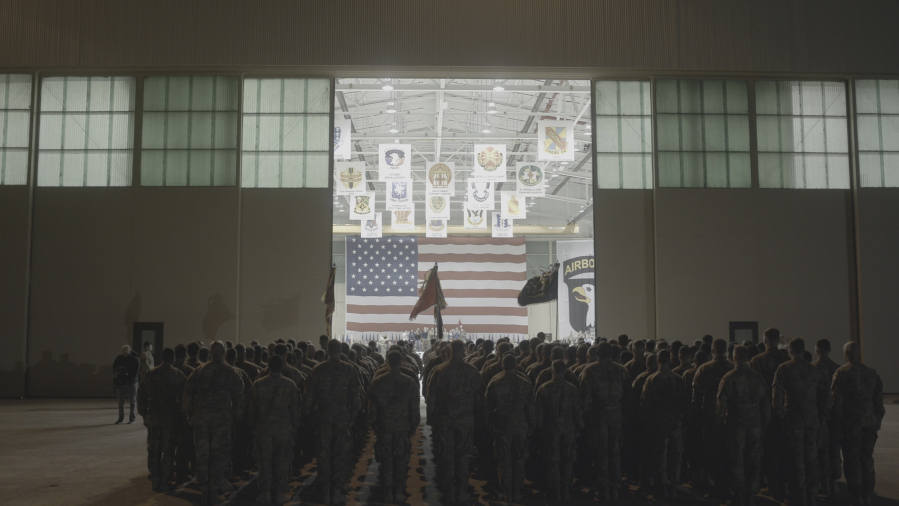LOS ANGELES — The new eight-part documentary series “Chain of Command” is being promoted by the National Geographic Channel as offering an unprecedented look at the war against violent extremism and the men and women devoting their lives to it. To get that perspective, film crews were embedded during the 18 months of production with military forces in some of the most dangerous spots on the planet.
The series, narrated by Chris Evans (“Captain America”) debuts at 9 p.m. Jan. 15 with a look at the battle for Mosul, Iraq, where Capt. Quincy Bahler of the 101st Airborne Division monitors ISIS fighters via drone feeds alongside Iraqi generals, debating when it is safe to strike in an effort to liberate the city.
The debut episode will be followed by another episode where in Iraq, after the American and Iraqi coalition gain control of eastern Mosul, the fight shifts to the city’s west side. Meanwhile, on the Caribbean island of Trinidad, the Muslim community struggles to deal with the alarming reality of their young people leaving the country to fight for ISIS.
“It’s been an amazing experience to be able to meet and then tell the stories of these heroes,” says executive producer Scott Boggins. “They’re inspiring individuals from the highest levels of the U.S. military to the boots on the ground. We were always with groups of men and women who showed incredible commitment, and we were there with them to tell their stories during this time where extremism affects everyone.”
The series records the fight against radical threats in every corner of the world as it unfolds over one full year. This includes following Gen. Joe Dunford and the Joint Chiefs of Staff creating policy and strategy that is then executed on the battlefield, revealing firsthand how the decisions made at the Pentagon have a direct impact on our service members fighting on the front lines.
Even with access, getting the story was a challenge because the teams were in remote parts of the world. The key was learning how to adapt and follow the lead of the military. Boggins says that was necessary because they wanted this to be an immersive series.
“It’s the proverbial fly on the wall, so to speak, and we really are that. We are there with small groups of a crew, highly experienced producers and DPs who know how to adapt and tell stories, but it’s easy because the stories that we’re telling of these people, they want their stories to be told,” Boggins says. “The easiest way I can compare it to is you’re at an airport, and you see a serviceman or woman in uniform. First question you would always want to ask is, ‘Where are you from, soldier?’ ‘Where are you from, sailor?’
“That’s what this is. We get to know the people in such an intimate way, and then we get to tell what they do, the mission that they’re on, and then we tackle the larger questions.”
Jessica Phillips, a field producer embedded with troops in Iraq filming the conflict outside of Mosul, explains the military was cooperative — but to a point.
“When you think about it, when you’re in an area that’s in active conflict, the military, they’re working on their time, and they’re not going to slow down for you or your crew,” Phillips says. “You have to get on their time. You have to be present 24/7.
“When things get a little hairy, you have to focus on the story and make sure that that’s your focus. So, I think when you’re in situations like this, it’s smart to be on their schedule and be actively involved with what they’re doing.”
One of the concerns when a film crew or journalist gets embedded with the military is they form a bond that can change the way the story gets told. Capt. Greg Hicks, special assistant for public affairs to the chairman of the Joint Chiefs of Staff, stresses that the military never asked the filmmakers to add or omit anything from their stories.
What was asked of the teams, according to Hicks, was to document the lives of the men and women in uniform to tell the story of what they are doing. Hicks adds that was an easy request to make because the pride the members of the military have in the work being done.
Because there was so much footage, certain things had to be cut from the documentary series. Jeff Hasler, head of development and production at National Geographic Studios, stresses those cuts were made by the film team based on what was best to tell the story and not at the request of the military.



